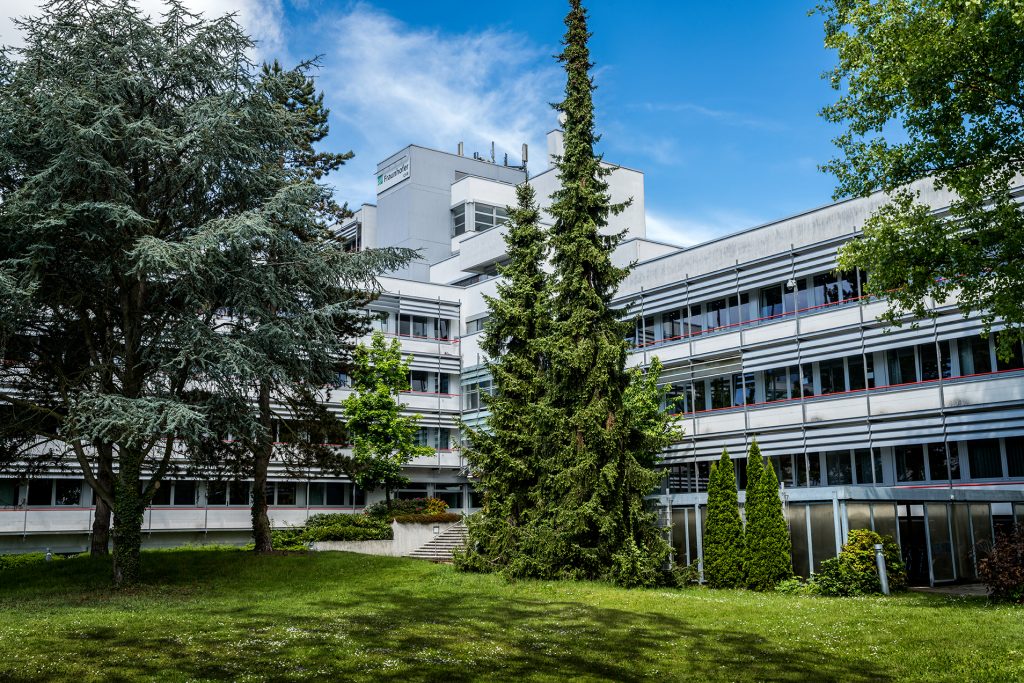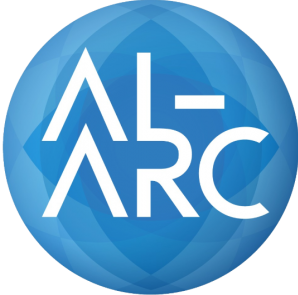Ahead of the upcoming AI-ARC consortium Meeting and Lab tests in Karlsruhe from the 13th to 15th of December, we caught up with Mathias Anneken and Adrian Hoppe from Fraunhofer IOSB.

Can you give some background to Fraunhofer IOSB?
The Fraunhofer-Gesellschaft based in Germany is the world’s leading applied research organization. Prioritizing key future-relevant technologies and commercializing its findings in business and industry, plays a major role in the innovation process. A trailblazer and trendsetter in innovative developments and research excellence, it is helping shape our society and our future. Founded in 1949, the Fraunhofer-Gesellschaft currently operates 76 institutes and research units throughout Germany. Over 30,000 employees, predominantly scientists, and engineers work with an annual research budget of €2.9 billion. Fraunhofer generates €2.5 billion of this from contract research.
Fraunhofer IOSB as one of the 76 institutes, has 7 research sites in Germany and a liaison office in Beijing. With an operating budget of €70 million and about 810 employees (including about 250 students), we focus on the three core competencies that are reflected in our name. Optronics, system technologies, and image exploitation.
Optronics is concerned with the generation of light, its beam shaping, propagation, and transformation into electronic signals – i.e. in particular with technical processes to generate images (in the broadest sense) of the world around us. System technologies ensure a holistic approach: We not only develop components and algorithms but also complex hardware and software architectures. The resulting information technology systems support people on the basis of sensor data, automate certain tasks, and/or open up new paths in human-machine interaction. We set the highest standards in terms of interoperability, IT security, and data protection/privacy. Image exploitation investigates methods and algorithms to obtain information and ultimately relevant insights from the images.
As WP3 leaders can you describe in more detail Fraunhofer’s role in the AI-ARC project?
As the leader of WP3 “Technical Development”, Fraunhofer is responsible for monitoring the general implementation of the AI-ARC solution, which includes the Virtual Control Room (VCR) as well as the different services provided by the partners. Additionally, we facilitate the contact between WP2 and WP4 stakeholders to support the development of the use cases and the demonstrations. Furthermore, different components of the AI-ARC solution will be developed and integrated by the involved Fraunhofer Institutes: Fraunhofer IOSB will provide the Digital Map Table (DigLT) software as the foundation of the VCR and a probabilistic expert-knowledge-based anomaly detection system, while Fraunhofer EMI will provide a service to estimate the reliability of AI-based services.
What are your Individual research/ technical interests?
Mathias:

Coming from a background in control engineering at the Karlsruhe Institute of Technology (KIT), I always had a passion for automation. During my time working at Fraunhofer IOSB and as a PhD student at the KIT, I focused my research on situation recognition and anomaly detection mainly in the maritime domain. I was able to gain experience in multinational projects by successfully supporting projects like MARISA and OCEAN2020. Since July 2022, I’m leading the research group “Applied Explainable Artificial Intelligence” at Fraunhofer IOSB. In my group, we develop transparent AI systems which will put an end-user into the position to not only get some results out of a black-box system but rather have an explanation for the system’s results, thus enabling the usage of AI system’s critical domains. In AI-ARC, I’m more than happy to work with a motivated international team on solving our challenges ahead!
Adrian:

Already in my studies at the Karlsruhe Institute of Technology (KIT), I developed a strong interest in the topics of human-computer interaction and computer graphics. I combined the two topics in my master thesis at the Fraunhofer IOSB, by evaluating how common PC interactions could be implemented in virtual reality (VR). After that, I stayed with Fraunhofer IOSB to dive deeper into the topics of visualization, interaction, and collaboration in VR and started a dissertation on that topic. Besides research and other topics in our department of Interactive Analysis and Diagnosis, we develop the DigLT, a web- and VR-based situational display, where questions or requirements from end-users would drive forward my research interests. Thereby gained insights and new and interesting functionality that would then flow back into the DigLT software and complete the circle before starting a new iteration. Even after completing my dissertation, the possibilities of VR still amaze me and I am looking forward to uncovering more hidden potential to increase the usability and performance of current and future software systems.
What do you find most interesting or challenging about Fraunhofer’s role in the AI-ARC project?
For Fraunhofer, the biggest challenge is leading the developments which are performed by a multitude of partners to work on the same goal of making the VCR a reality. Thus getting all partners on the same page about the challenges in the maritime domain as well as the underlying used technologies is crucial for AI-ARC success. For our developments, for sure the implementation of our technologies into the VCR and the tailoring of these technologies to the end user’s needs is the most interesting part.

Can you tell me about the upcoming lab tests? What will they consist of, and what are the aims?
The lab-based demonstration, as the first testing phase of the AI-ARC project, will take place in M16 (13-15th December 2022) at the Fraunhofer IOSB lab in Germany. An AI-ARC consortium meeting will also occur during this time. One month before the lab test, there will be an online pre-test to assure a smooth demonstration. The lab demonstration will serve to test the technical readiness of the VCR platform and will coincide with the completion of MS 11 (Data and system integration 1 – System is functional without AI). In addition, to prepare for the integration of AI services in the near future, all partners will demonstrate that they are capable of exchanging data with each other. This requires defining the message topics and formats to be used, establishing a connection to our data exchange node, and most importantly sending and receiving data. As some systems are not finalized yet, the integration test does not target testing the systems themselves but rather checking the validity and robustness of the communication interfaces.
Fraunhofer will be hosting the next consortium meeting – What are you looking forward to about this?
We are looking forward to welcoming the whole consortium in Karlsruhe at the Fraunhofer IOSB and thus being able to see each other in person again. During this meeting, there will be a consortium meeting as well as integration sessions and possibilities to exchange information about the developments of the individual partners. Hopefully, the weather and the general situation will allow us to continue our discussions in the cosy atmosphere of a visit to the Christmas market in the city centre.

